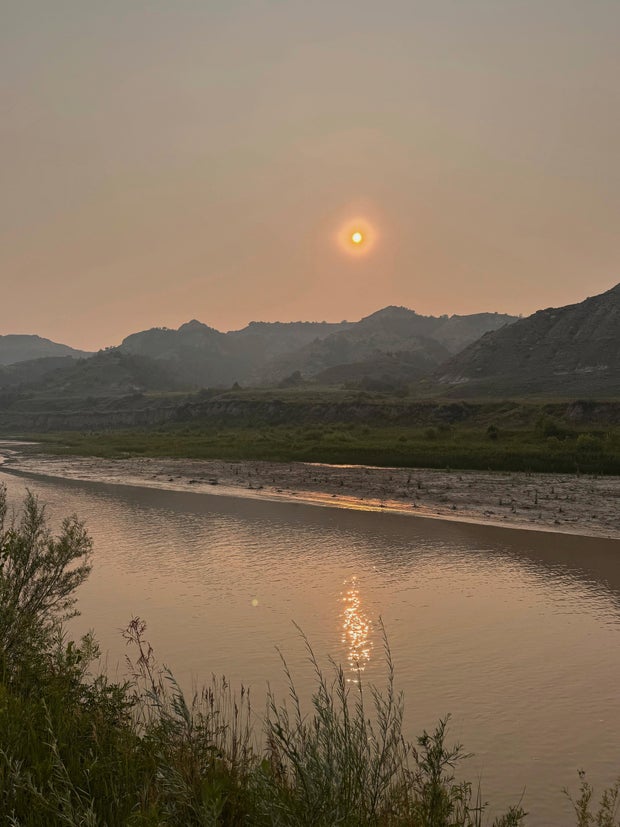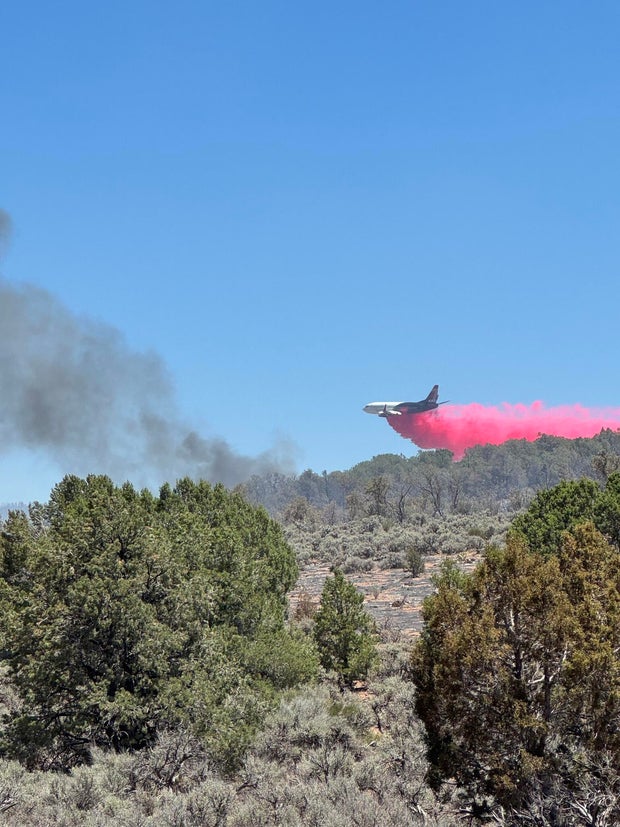A fire near the Grand Canyon National Park in Arizona has destroyed dozens of structures, including the historic Grand Canyon Lodge and a water treatment facility, which caused a chlorine gas leak — forcing firefighters to evacuate.
The Dragon Bravo Fire in the North Rim of the Grand Canyon “exhibited extreme and volatile fire behavior” overnight and expanded over 500 acres, fire managers said Sunday. It was fueled by up to 40 mph wind gusts but firefighters were able to slow the fire’s progression using aerial drops of flame retardant.
However, as the fire burned the water treatment facility, fire personnel had to evacuate from critical zones and “the use of aerial retardant was not feasible” due to the gas leak, authorities said. Approximately 50 to 80 structures have been lost, including the National Park Service administrative buildings and visitor facilities.
Courtesy: M. Quinn/National Parks Service
No injuries or loss of life have been reported, fire managers said.
Meanwhile, the White Sage Fire located in Kaibab National Forest has forced hundreds to evacuate as it doubled in size on Sunday. It has scorched over 40,000 acres and hasn’t been contained, according to authorities.
Both fires in Arizona are believed to have been started by lightning, according to the U.S. Forest Service.
An intensifying wildfire season also sees the return of Canadian wildfire smoke into the U.S. Much of the Upper Midwest was dealing with swaths of unhealthy air because of drifting smoke.
The smoke from the Canadian wildfires is covering the northern region of the U.S. at a time when people want to be enjoying lakes, trails, and the great outdoors.
Most of Minnesota and parts of Montana, North Dakota and Wisconsin were ranked “unhealthy” for air quality on a U.S. Environmental Protection Agency map. Part of North Dakota that is home to Theodore Roosevelt National Park and other tourist attractions was ranked “very unhealthy,” with some of the worst air quality in the nation.
Joel Crane / AP
In Minnesota, “If you have a nice pork loin you can hang from a tree, it’ll turn into ham,” quipped Al Chirpich, owner of the Hideaway Resort near Detroit Lakes, where people come to enjoy tree-lined Island Lake for fishing and other water activities.
The conditions started Friday, dragging smoke from the Canadian wildfires down to the surface, said National Weather Service Meteorologist Jennifer Ritterling, in Grand Forks. Periods of bad air quality are expected to last through the weekend in the region, she said.
Limiting time outdoors, keeping windows closed and running air purifiers are good ideas for people with lung conditions such as asthma and chronic obstructive pulmonary disease, and even healthy people, Ritterling said.
“Our summers up here are fairly short and so everyone wants to get out and enjoy them, and it’s a little frustrating when there’s this smoke in the air,” she said.
Meanwhile, all of Manitoba is under a state of emergency because of the wildfires, which have led to 12,600 people evacuating their homes in the Canadian province. The fires in the central province have burned over 3,861 square miles, the most land burned in 30 years of electronic record-keeping.
Under 1,000 people have evacuated their homes in Saskatchewan, where wildfires also continue to burn.
National Weather Service warns of smoke, dangerous heat
Forecasters and national Arizona parks officials have been issuing warnings over dangerous weather conditions in the last few days as temperatures reach over 110 degrees.
“Not only is there dangerous heat at the lower levels of the Grand Canyon, but lots of smoke and high fire danger,” NWS Flagstaff said on social media on Saturday. “Don’t mess around.”
A 67-year-old Texas man died while hiking in the Grand Canyon, the National Park Service said Wednesday.
The White Sage Fire also started Wednesday, and the Dragon Bravo Fire began on July 4, according to authorities.
Wildfire.gov
More than 200 firefighters and support personnel worked to halt the uncontained fire Saturday as it burned across a high-altitude plateau between the communities of Lonesome, White Sage and Jacob Lake.
In Colorado, Black Canyon of the Gunnison National Park was closed because of a 4.4-square-mile wildfire burning on the South Rim of the park, known for its dramatic, steep cliffs. A few miles from the fire, an evacuation was ordered for the community of Bostwick Park, and a nearby highway was also shut.
The fires in and near both national parks led to evacuations of hundreds of people.
Chirpich, the Minnesota resort owner, said he has plans to go to Black Canyon of the Gunnison National Park on Thursday and is “a bit pensive about how that’s going to be there.”
“I’m going to leave one smokehouse for another, I guess,” he said.


